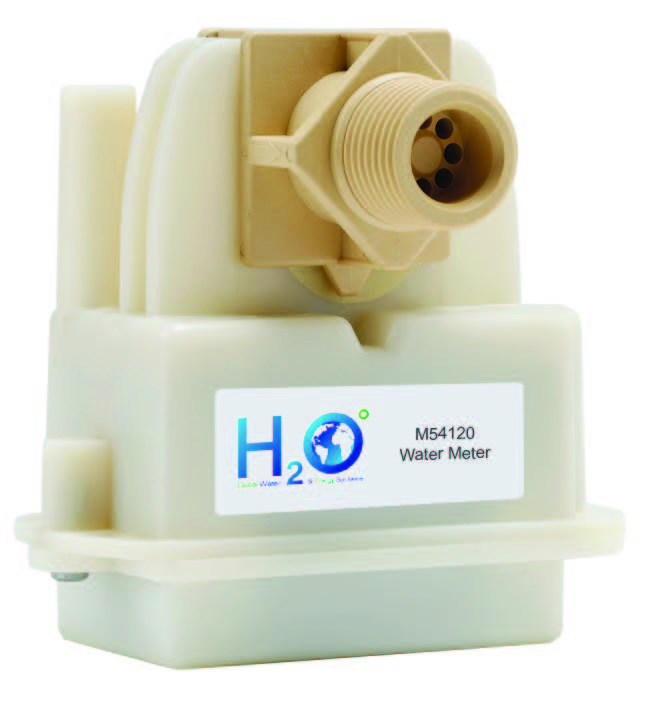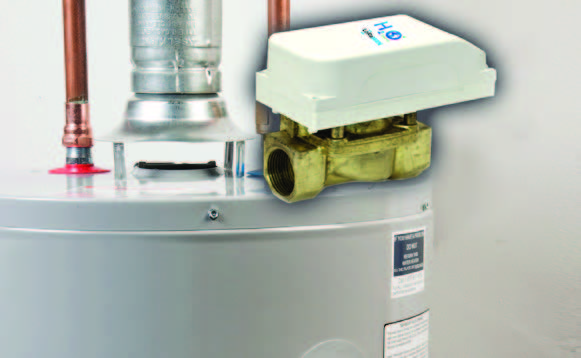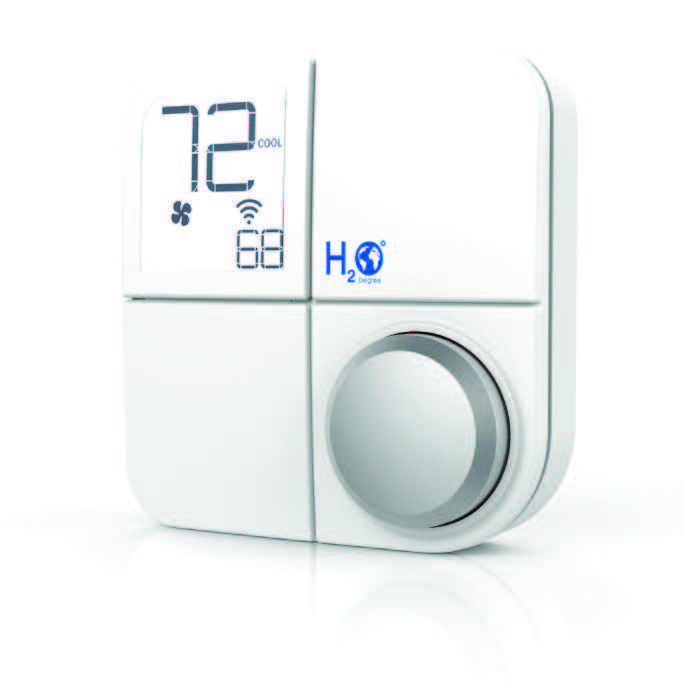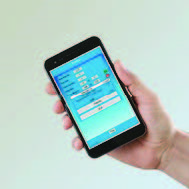
Advances in Utility Management Solutions for Multi-Tenant Facilities
H2O Degree expands its portfolio of wireless and internet-enabled utility management tools. New LoRaWAN water meter, wireless smart thermostat, internet-enabled flood detection devices and a mobile commissioning app comprise a comprehensive Smart Submetering System that helps property owners and managers control utility costs.
INTRODUCTION
Owners and property managers of multi-tenant facilities, whether commercial, mixed-use or multi-family, increasingly employ submetering systems to control utility costs and improve their buildings’ marketability. The most sophisticated of these utility management systems offer granular insight into residents’ water, electricity, gas and BTU usage data. More importantly, they also provide cloud-based monitoring that results in actionable information to prevent energy and water from being wasted due to open windows, faulty fixtures, and the biggest water-wasting issue in multi-tenant buildings: leaky (running) toilets.
This paper describes the latest advancements in H2O Degree’s comprehensive smart submetering system, including a new LoRaWAN water meter, Smart Thermostat, internet-enabled flood-detection devices and a commissioning and control app for mobile phones.
THE BENEFITS OF SUBMETERING
The H2O Degree wireless submetering system provides reporting, billing and analysis of utility-usage data via the company’s cloud-based platform. The system integrates easily with leading third-party RBC (read, bill, collect) service providers to streamline the process of billing tenants for their utility consumption. It also offers optional functions that enable managers to handle the billing themselves.
The reporting of accurate consumption data also allows property managers to bill tenants for their precise usage. They can also encourage tenants to conserve by giving them access to a web portal showing individual water-usage patterns and energy consumption.
By reducing their building’s overall water and energy consumption, the wireless submetering
system helps building managers earn valuable points toward LEED, the international standard that incentivizes environmental building practices. This includes the EA and WE credit areas of LEED v4 for water conservation. The resulting benefits for multi-tenant building owners and managers include:
- Achieving maximum Energy efficiency
- Reducing operating expenses
- Creating management and tenant behavior change
- Increasing net operating income
- Improving property valuation
SMART WATER MANAGEMENT

In a submetering installation, H2O Degree’s Smart Metering wireless data acquisition system utilizes wireless water meters and Web-based software to collect a building’s water consumption data. Property managers receive daily water “leak reports” based on granular data collected by the submetering system. With visibility into increased events (e.g., toilet flushes), managers can find the problem – such as a broken flapper or cracked fill valve – and have it repaired before a significant amount of water is wasted. This is a critically important feature since leaking toilets represent almost half of the water wasted in a multi-family building. The system also provides an ideal solution to California’s SB 7 law that mandates water meter and submeter installations in all new multi-family residential buildings constructed after January 1, 2018.
The latest addition to H2O Degree’s wireless water submetering system is the LoRaWAN-based L54120 water meter (Figure 1). Not only does this water meter measure water flow in gallons and record the number and duration of water-usage events, it also measures water temperature.
The LoRaWAN-enabled water meter simplifies and lowers the cost of large multi-tenant water submetering installations. Equipped with LoRaWAN Class A secure wireless 915 MHz technology with line-of-sight, bi-directional communications of over six miles, it eliminates the need for repeaters. And, as a battery-operated device, it obviates the need for electrical connections.
Providing long-range wireless connectivity, the LoRaWAN water meter can operate within a 1,000-foot radius from the gateway, covering a 70-plus-acre garden-style apartment. In a high-rise facility, the unit can provide 25-story-radius operation from the gateway to cover a 30-story building. For buildings exceeding 25 stories, additional low-cost gateways can be installed to increase coverage.
As part of its “smart plumbing” approach to water management, H2O Degree has also enhanced its product offerings with internet-enabled, flood-detection devices. These inexpensive LoRaWAN on-the-floor water sensors and water shut-off valves can be easily added to existing wireless submetering installations.The device offering includes:
- LoRaWAN Water Flood Sensor – Detects water flood conditions on the floor with a secure, flexible design
- LoRaWAN Water Flood Rope Sensor – Detects water flood conditions across a wider area via an easy-to-install rope-type sensor that senses leaks along the full length of the rope
- LoRaWAN Occupancy Sensor – Detects real-time data about motion, lighting and temperature activity in a designated area, complementing the flood sensor alarm features
- LoRaWAN Smart Valve – Allows for remote open/close operation of water valves to support quick response to leaks and flood events based on input from floor sensors and usage data
By alerting off-site plumbing engineers or construction staff to pooling water detected on the floor, the devices help save water from being wasted due to a burst pipe, cracked water heater, or overflowing tub, to name a few typical scenarios. They also help building managers avoid costly property damage. So important is plumbing-related flood prevention in multi-tenant facilities, insurance companies are increasingly requiring that internet-enabled flood detection
devices be installed during construction as a condition of coverage.

SMART HVAC CONTROL
In multi-tenant buildings, energy submeters are installed, individually, at the point of load to monitor chillers, HVAC, air handlers, pumps and so forth. Operational inefficiencies may thus be identified to reveal, for example, if two or more large loads are coming on at the same time, causing demand spikes. Diagnostic functions also include the ability to identify equipment that may be close to failure, as indicated by a larger than normal current draw with no corresponding productivity output. Early identification of a potential problem allows facility engineers to schedule preventative maintenance before a costly failure occurs.
H2O Degree has bolstered its energy submetering system for multi-family and commercial facilities, by introducing the T1000 Smart Thermostat (Figure 3). A direct replacement for many 24VAC thermostats, the T1000 device is compact (4.5”H x 4.5” W x 1” D) and simple to install.
The wireless, networked T1000 enables remote visualization and local control of conventional (forced air) heating/cooling, heat pumps, electric baseboard heaters and hydronic heating. Since it is easy to access and program, the T1000 Smart Thermostat encourages utility conservation by property managers and tenants alike.

The T1000 collects a wide range of HVAC data by communicating wirelessly over H2O Degree’s secure 2.4 GHz network. Property managers can view temperature readings from the thermostats installed throughout their building and adjust them either individually or all at once using a user-friendly dashboard. They can program multiple heat/cool set-points, toggle between heat/cool modes and use conservation settings such as “night-setback” and “vacant.”
Additionally, building managers can give tenants access to their individual thermostats on a web portal that can be viewed on their phones or computers. This control capability incentivizes residents to take charge of their own heating and air conditioning bills.

MOBILE APP FOR COMMISSIONING AND CONTROL
The PropUp mobile app (Figure 4) is another new tool added to complement H2O Degree’s comprehensive portfolio of products that help property owners and managers reduce utility costs and prevent plumbing-related water damage in multi-housing and commercial buildings.
The commissioning and control app makes it easy to set up submetering devices and access utility information remotely. The PropUp app enables technicians to simply scan the device’s QR codes to complete setup on location. After installation, users can view real-time monitoring data collected by H2O Degree’s wireless water meters and smart thermostats from their mobile phones and computers.
As a progressive web application (PWA), PropUp is efficient and versatile. In addition to its commissioning and control capabilities, the mobile app can be used in H2O Degree’s remote flood-prevention application. For example, when an off-site user receives an alert that a
LoRaWAN-enabled on-the-floor rope sensor has detected pooling water at a high-rise property, they can use PropUp to remotely shut off the associated LoRaWAN-enabled smart water valve to prevent flooding.
CONCLUSION
As a leading provider of utility management solutions for more than 15 years, H2O Degree’s scope of wireless utility metering, leak detection and alarming, and thermostat control solutions are available for most multi-family residential, commercial and industrial applications.
Compared to other utility management systems, the H2O Degree smart submetering system offers property managers a more precise approach to monitoring utility consumption in multi-family and commercial buildings.
Additionally, the company continues to grow its portfolio of internet-based devices and technologies that provide property managers with the most effective tools for utility management.